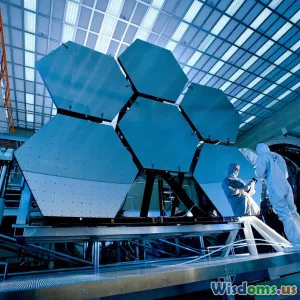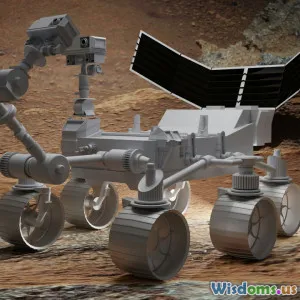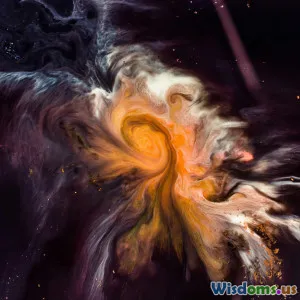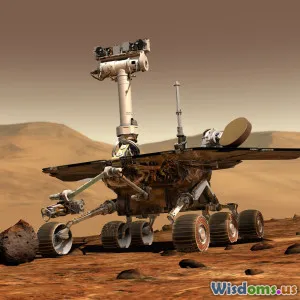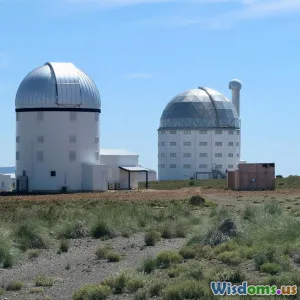
The Evolution of Astronomical Observations
7 min read Explore how astronomical observations evolved from ancient stargazing to modern space telescopes shaping our cosmic understanding. (0 Reviews)
The Evolution of Astronomical Observations
Astronomy has captured human imagination for millennia. From the earliest civilizations observing celestial bodies to contemporary scientists using sophisticated space telescopes, the way we observe the cosmos has undergone a remarkable evolution. This journey not only reflects technological advancements but also humanity’s growing desire to understand our place in the universe.
The Dawn of Astronomy: Naked-Eye Observations
Before any instrument was invented, ancient peoples relied solely on their eyes to study the night sky. Early civilizations such as the Babylonians, Egyptians, and Maya meticulously tracked the movements of the Sun, Moon, stars, and planets to develop calendars and navigate.
For instance, the Babylonians developed precise methods to predict lunar and solar eclipses by noting recurring celestial patterns. Similarly, Stonehenge in England is believed to have aligned stones marking solstices, illustrating a sophisticated appreciation for astronomical cycles.
These observations, though limited without telescopes, laid the groundwork for astronomical knowledge and the transition toward systematic, instrument-aided study.
The Telescope Revolution: Unlocking New Cosmic Visions
Galileo and the Birth of Telescopic Astronomy
The invention of the telescope in the early 17th century marked a profound leap forward. Galileo Galilei’s improvements to the refracting telescope enabled him to observe craters on the Moon, the moons of Jupiter, and the phases of Venus—discoveries that challenged the prevailing geocentric worldview.
His 1610 publication, "Sidereus Nuncius," unveiled these revelations and ignited whispers of a vastly more complex universe. Telescopes allowed observers to see beyond the limits of human vision, opening up an era rich with discovery.
Advancements Through Reflecting Telescopes
While early telescopes used lenses, Sir Isaac Newton’s invention of the reflecting telescope in 1668 solved chromatic aberration and allowed construction of larger mirrors. This design shift led to instruments like the 100-inch Hooker telescope at Mount Wilson Observatory, pivotal in Edwin Hubble’s revelation that galaxies exist beyond the Milky Way.
The evolution from small refractors to giant reflectors dramatically enhanced resolution and sensitivity, enabling astronomers to probe deeper into space.
The Age of Photographic and Radio Astronomy
Photographic Plates and Quantitative Study
In the late 19th century, capturing images of the heavens became possible with photographic plates, replacing manual sketching. This innovation facilitated permanent, objective records of star fields and transient phenomena like novae.
Edwin Hubble used photographic technology to measure Cepheid variable stars' distances, helping quantify the universe’s vast scale and ultimately demonstrating that it is expanding.
The Emergence of Radio Astronomy
In the 1930s, astronomers discovered that celestial objects emit radio waves, introducing a whole new observational spectrum invisible to optical telescopes. Karl Jansky’s detection of radio waves from the Milky Way spawned radio astronomy, enabling the study of phenomena such as pulsars and cosmic microwave background radiation.
Radio telescopes like the Arecibo Observatory and the Very Large Array (VLA) have uncovered insights inaccessible through visible light. Multispectral astronomy—observing in optical, radio, X-ray, and infrared—has become key to a complete understanding.
Space-Based Telescopes: Expanding Horizons Beyond Earth
Earth's atmosphere limits certain wavelengths and introduces distortion, a hurdle resolved through space telescopes.
The Hubble Space Telescope (HST)
Launched in 1990, HST revolutionized observational astronomy by providing clear, high-resolution images without atmospheric interference. Its imagery, from the Pillars of Creation to distant galaxies, has become iconic, playing a central role in understanding cosmic expansion, dark energy, and exoplanets.
The James Webb Space Telescope (JWST)
Deployed in late 2021, JWST surpasses Hubble by observing primarily in the infrared spectrum, peering through cosmic dust and seeing farther back in time. JWST’s observations are expected to transform our knowledge about the early universe, star formation, and the atmospheres of exoplanets.
The Role of Computational Astronomy and Big Data
Modern astronomical observations generate massive volumes of data requiring sophisticated computational tools. Machine learning algorithms analyze complex datasets from surveys like the Sloan Digital Sky Survey (SDSS) or the upcoming Vera C. Rubin Observatory.
These data-driven techniques aid in discovering transient events like supernovae or gravitational wave sources identified by LIGO and Virgo collaborations, merging observational astronomy with data science.
Conclusion: A Never-Ending Quest
The evolution of astronomical observations—from naked eyes to space observatories—reflects an accelerating journey of discovery. Each technological leap has answered age-old questions while posing unprecedented new ones.
Embracing the synergy of evolving instrumentation, computational power, and scientific curiosity, humanity continues to unlock the universe’s secrets. Future innovations, such as extremely large telescopes and new satellite missions, promise to deepen our cosmic perspective, inviting us all to look up, ponder, and participate in the grand adventure of understanding the cosmos.
“Somewhere, something incredible is waiting to be known.” — Carl Sagan
This persistent quest encourages amateur astronomers, students, and the public alike to contribute in various ways—from backyard stargazing to citizen science programs—making astronomy one of humanity’s most inclusive sciences.
The stars are not just distant points of light; they are milestones on our journey across time and space.
Rate the Post
User Reviews
Popular Posts










